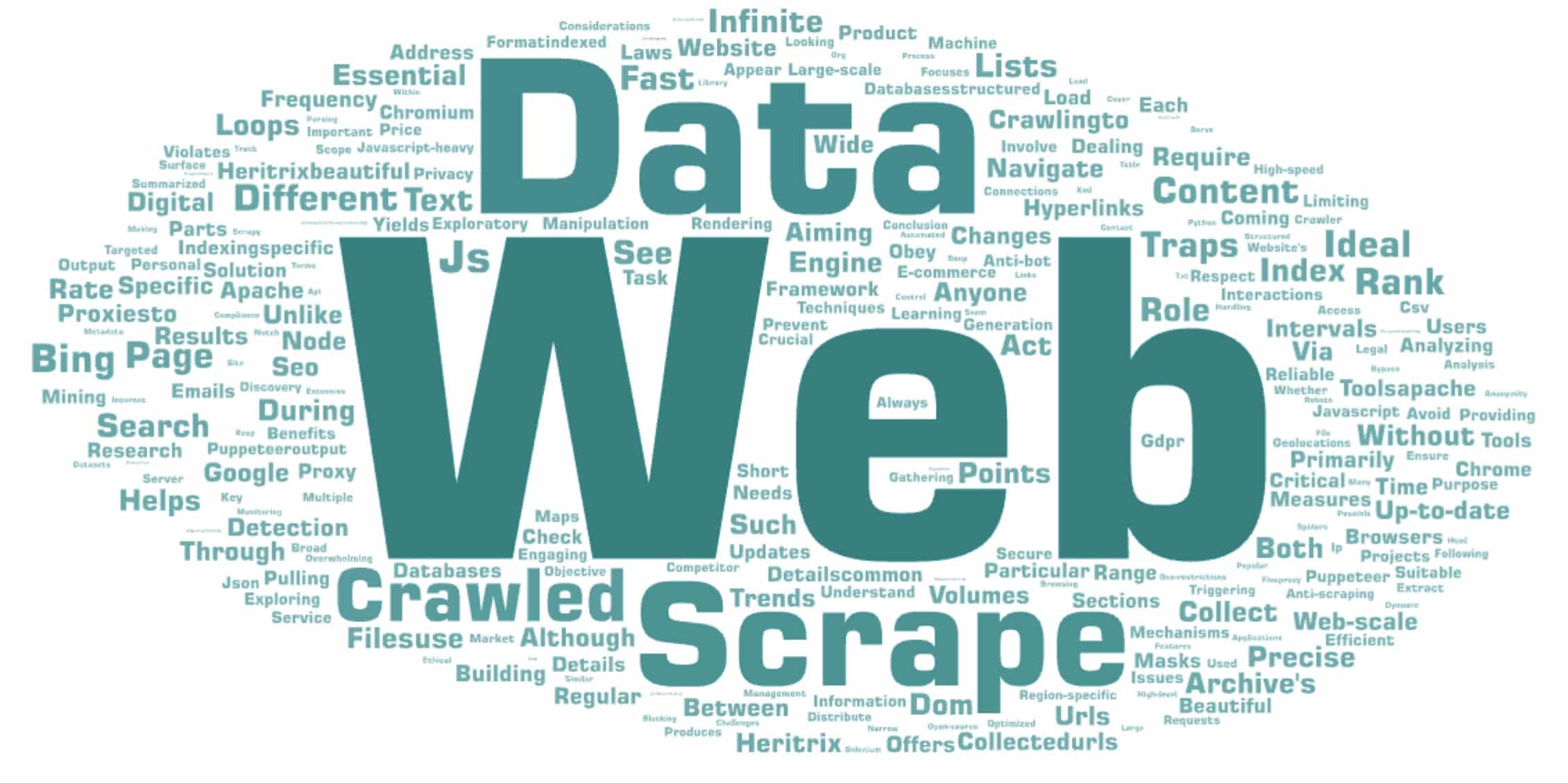
Comparison Table
| Aspect | Web Crawling | Web Scraping |
|---|---|---|
| Definition | Systematically browsing the web to index pages and links | Extracting specific data from web pages |
| Primary Purpose | Discovering and indexing new content for search engines | Gathering targeted information for analysis or use |
| Scope | Broad, covering multiple websites and domains | Narrow, focusing on specific data within pages |
| Data Collected | URLs, metadata, page content for indexing | Specific data like prices, emails, product details |
| Common Tools | Apache Nutch, Scrapy spiders, Heritrix | Beautiful Soup, Selenium, Puppeteer |
| Output Format | Indexed data, search engine databases | Structured data in CSV, JSON, XML files |
| Use of Proxies | To avoid IP blocking during extensive crawling | To access data without detection and bypass geo-restrictions |
Understanding the difference between web crawling and web scraping are essential for anyone involved in data collection, SEO, or digital marketing. Although they may seems similar, they serve different purposes and require different tools and techniques.
Understanding Web Crawling
Web crawling is the automated process of browsing the internet to index content for search engines. Crawlers, or spiders, navigate through pages via hyperlinks, collecting data that helps search engines understand and rank websites.
Key Features of Web Crawling
- Purpose: Primarily used by search engines like Google and Bing to index web pages.
- Scope: Broad, aiming to cover as many web pages as possible.
- Data Collected: URLs, metadata, page content, and links.
- Frequency: Regular intervals to keep data up-to-date.
- Challenges: Handling large volumes of data, avoiding traps like infinite loops.
Popular Tools for Web Crawling
- Apache Nutch: An open-source web crawler ideal for large-scale projects.
- Scrapy: A fast, high-level web crawling and web scraping framework for Python.
- Heritrix: The Internet Archive’s open-source, extensible, web-scale crawler.
Applications of Web Crawling
- Search Engine Indexing: Building databases for search engine results.
- Market Research: Analyzing trends across multiple websites.
- Content Monitoring: Keeping track of updates or changes on websites.
Exploring Web Scraping
Web scraping involves extracting specific data from web pages. Unlike crawling, which is broad and exploratory, scraping is precise and targeted, focusing on particular information within a page.
Key Features of Web Scraping
- Purpose: Collect specific data points for analysis, such as pricing information or contact details.
- Scope: Narrow, targeting specific pages or sections of a website.
- Data Collected: Structured data like tables, lists, and text content.
- Techniques: HTML parsing, DOM manipulation, API interactions.
- Challenges: Dealing with dynamic content, JavaScript rendering, anti-scraping measures.
Popular Tools for Web Scraping
- Beautiful Soup: A Python library for pulling data out of HTML and XML files.
- Selenium: Automates browsers, making it possible to scrape dynamic, JavaScript-heavy websites.
- Puppeteer: A Node.js library providing a high-level API to control Chrome or Chromium.
Applications of Web Scraping
- Price Monitoring: Tracking competitor prices in e-commerce.
- Lead Generation: Collecting contact information for marketing.
- Data Mining: Gathering large datasets for machine learning.
The Role of Proxies in Crawling and Scraping
Using proxies is critical in both web crawling and web scraping to ensure anonymity and prevent IP blocking.
Benefits of Using Proxies
- Anonymity: Masks your IP address, making your requests appear as if they’re coming from different users.
- Access Control: Bypass geo-restrictions to access region-specific content.
- Rate Limiting: Distribute requests to avoid triggering anti-bot mechanisms.
FineProxy.org: Your Solution for Reliable Proxies
FineProxy.org offers a wide range of proxy servers suitable for web crawling and scraping needs. With high-speed connections and multiple geolocations, you can ensure your data collection processes are efficient and secure.
Ethical and Legal Considerations
When engaging in web crawling and scraping, it’s important to act ethical and legal.
- Respect Robots.txt: Always check the robots.txt file to see which parts of the site can be crawled.
- Obey Terms of Service: Scraping data that violates a website’s terms can lead to legal issues.
- Data Privacy Compliance: Ensure compliance with laws like GDPR when handling personal datas.
- Server Load Management: Avoid overwhelming servers with too many requests in a short time.
Key Differences Summarized
- Objective: Crawling is for discovery and indexing; scraping is for data extraction.
- Scope: Crawling is broad; scraping is narrow.
- Data Output: Crawling produces indexes and site maps; scraping yields structured datasets.
- Techniques: Crawling focuses on following links; scraping involves parsing content.
- Tools: Different tools are optimized for each task.
Conclusion
While web crawling and web scraping might seem similar on the surface, they serve different purposes and involve different techniques. Whether you’re looking to index the web for a search engine or extract specific data for analysis, understanding these differences is crucial.







Comments (0)
There are no comments here yet, you can be the first!